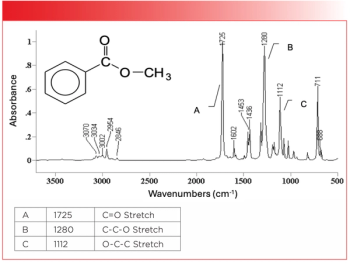
AI and Satellite Spectroscopy Team Up to Monitor Urban River Pollution in China
A study from Chinese researchers demonstrates how combining satellite imagery, land use data, and machine learning can improve pollution monitoring in fast-changing urban rivers. The study focuses on non-optically active pollutants in the Weihe River Basin and showcases promising results for remote, data-driven water quality assessments.
In a significant advancement for environmental monitoring, researchers in China have developed a novel approach for assessing water pollution in urban rivers by fusing satellite data, land use patterns, weather variables, and machine learning models. The study, published in the Journal of Hydrology, focuses on the Weihe River Basin and explores a more effective way to monitor critical water quality parameters (WQPs) like ammonia nitrogen (NH₃-N), total phosphorus (TP), chemical oxygen demand (COD), and dissolved oxygen (DO).
Spectroscopic Insights: Satellite Data Details
The study utilized Sentinel-2 multispectral satellite imagery, a product of the European Space Agency’s (ESA) Copernicus Programme, to capture high-resolution spectral data essential for water quality assessment. Sentinel-2’s Multispectral Instrument (MSI) offers 13 spectral bands across the visible, near-infrared (NIR), and shortwave infrared (SWIR) regions, with spatial resolutions of 10, 20, and 60 meters depending on the band. These spectral bands are especially sensitive to water constituents and land features, making them ideal for modeling non-optically active water quality parameters. The research also referenced previous studies that employed Landsat-8, IKONOS, and unmanned aerial vehicle (UAV) platforms to collect remote sensing data. However, Sentinel-2 was favored in this work due to its frequent revisit cycle (every five days), broad swath width (290 km), and high spatial and spectral resolution, which collectively enhanced the accuracy and consistency of machine learning models used for predicting parameters like ammonia nitrogen (NH3-N), total phosphorus (TP), chemical oxygen demand (COD), and dissolved oxygen (DO) (1–4).
The work was led by Yongchun Liang, Fangyu Ding, Lei Liu, Fang Yin, Mengmeng Hao, Tingting Kang, Chuanpeng Zhao, Ziteng Wang, and Dong Jiang from institutions including Chang’an University, the Chinese Academy of Sciences, Peking University Shenzhen Graduate School, and the Chinese Research Academy of Environmental Sciences (1).
The Challenge of Urban River Monitoring
Urban rivers, especially those like the Weihe River and its tributaries, face rapid degradation due to domestic, agricultural, and industrial pollution. Traditional methods of sampling and lab-based water analysis are resource-intensive and spatially limited. Moreover, the dynamic nature of rivers, with variable flow and narrow morphology, complicates the use of standard low-resolution remote sensing tools typically designed for broader water bodies like lakes.
“While remote sensing has been successfully used in lakes, the complexities of river systems—fast flows, narrow widths, and human impacts—require a more comprehensive monitoring strategy,” the authors explain (1).
A Multi-Source Data Approach
The research team turned to Sentinel-2 satellite imagery, known for its 13-band multispectral capabilities and high spatial resolution, as the core of their remote sensing strategy. But what sets this study apart is its integration of multi-source data: field sample data, meteorological elements such as temperature, precipitation, evapotranspiration, and wind, as well as detailed land use classifications (1).
Land use proved to be a crucial variable. Urban and agricultural areas were strongly associated with poorer water quality, while forested regions generally correlated with better conditions. The machine learning (ML) models incorporated these land characteristics to predict pollutant levels more accurately (1).
Spectral Insights and Machine Learning Power
Key to the study’s innovation was its use of advanced regression algorithms: extra tree regression (ETR), eXtreme gradient boosting (XGBoost), and gradient boosting regression (GBR). The models were trained and validated using 5-fold cross-validation and evaluated using the coefficient of determination (R²). Results were impressive (1).
- NH3-N predictions reached R² values of 0.65,
- TP reached 0.71 (test) and 0.68 (validation),
- COD yielded 0.50 and 0.47, and
- DO showed strong performance with 0.68 and 0.64.
Spectral reflectance, especially in specific Sentinel-2 bands, played a vital role in accurately modeling DO and TP levels, indicating that even pollutants without strong optical signatures can be inferred from remote sensing when coupled with the right algorithms and contextual data (1).
Implications for Policy and Practice
This study provides a roadmap for how environmental scientists and urban planners can scale up water quality assessments without relying solely on costly field campaigns. The model's demonstrated transferability across river segments in the Weihe Basin suggests strong potential for nationwide or even global applications (1). Moreover, this work supports data-driven decision-making for water resource managers, highlighting which regions are most at risk and where policy interventions could be most effective.
Looking Ahead
As pressures on urban rivers increase, this fusion of satellite remote sensing and ML offers a scalable, cost-effective solution for environmental surveillance. The researchers emphasize that their methodology lays a robust foundation for tracking pollution trends over time and space, ultimately contributing to healthier ecosystems and more sustainable cities.
References
(1) Liang, Y.; Ding, F.; Liu, L.; Yin, F.; Hao, M.; Kang, T.; Zhao, C.; Wang, Z.; Jiang, D. Monitoring Water Quality Parameters in Urban Rivers Using Multi-Source Data and Machine Learning Approach. J. Hydrol. 2025, 648, 132394. DOI:
(2) Spoto, F.; Sy, O.; Laberinti, P.; Martimort, P.; Fernandez, V.; Colin, O.; Hoersch, B.; Meygret, A. Overview of Sentinel-2. In 2012 IEEE Int. Geosci. Remote Sens. Symp.; IEEE: Munich, Germany, 2012; pp 1707–1710. DOI:
(3) Jutz, S.; Milagro-Perez, M. P. Copernicus: The European Earth Observation Programme. Rev. Teledetec. 2020, (56), V–XI. DOI:
(4) Wang, H.; Pu, R.; Zhu, Q.; Ren, L.; Zhang, Z. Mapping Health Levels of Robinia pseudoacacia Forests in the Yellow River Delta, China, Using IKONOS and Landsat 8 OLI Imagery. Int. J. Remote Sens. 2015, 36 (4), 1114–1135. DOI:
Newsletter
Get essential updates on the latest spectroscopy technologies, regulatory standards, and best practices—subscribe today to Spectroscopy.





